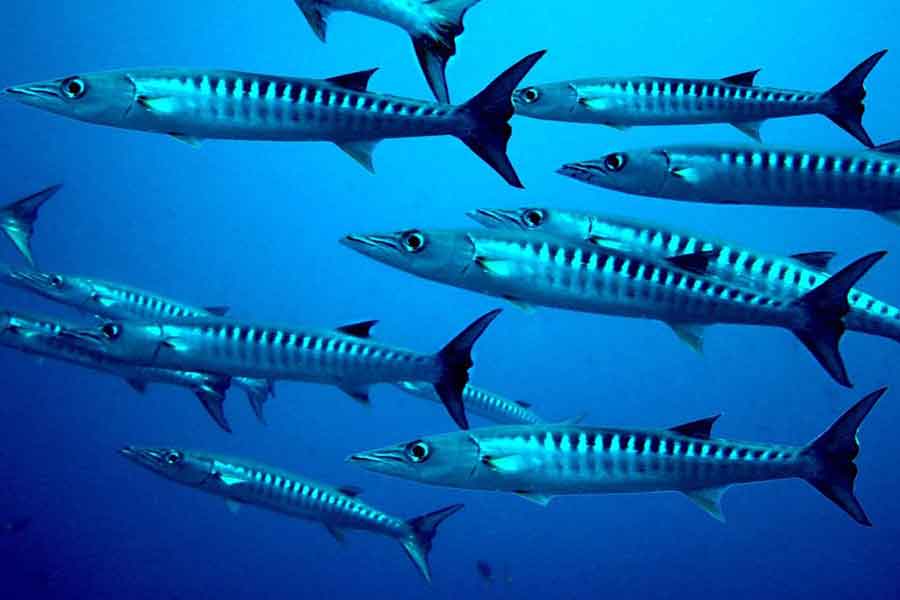
Located at the top of the marine food chain, alongside sharks in the group of super-predators, barracudas have always had a notorious reputation. However, there is much more that is unknown than what is known about this fascinating animal.
In the past, divers claimed that no shiny objects should be carried underwater, such as belt buckles, to avoid being attacked by a barracuda. However, the few recorded attacks on humans were always related to spearfishermen who were holding a bleeding fish, which was the actual reason for the attack. It is common for divers equipped with tanks exploring a reef to be accompanied throughout their journey by a barracuda, attentively observing their movements. This seems to be due to the simple curiosity of the animal.
There is nothing in the sea as hydrodynamic as a barracuda. Equipped with a sharp row of teeth and robust fins, this fish can reach dizzying speeds in short bursts, making it ideal for surprise attacks. Unlike sharks, which patrol the reef in search of prey, barracudas often remain motionless for extended periods of time. They frequently do so at shallow depths, as their silver bodies go unnoticed from below due to the sunlight’s glare on the water’s surface. It is at this moment that they choose their prey and strike. Seconds before the lethal attack, the black spots on their bellies enlarge, darkening their entire abdomen. Sometimes they can also be seen motionless among the coral or plants on the seabed, perhaps so focused on their future prey that it becomes easy for a cautious diver to approach them from behind and touch them. It is possible that, in the absence of predators, all their motion receptors are concentrated forward on their heads.
Success is not always guaranteed. It is common to see fish bitten by barracudas that managed to escape, carrying the marks of the attack on their bodies for life. Sometimes, if a barracuda encounters prey that is too large for it, it positions itself at a distance and starts making a dry noise by violently closing its jaws and clashing its teeth. This behavior, which might seem like a threat, is believed to be a signal for other barracudas in the area to join the feast and share the meal.
The average size of a barracuda ranges from half a meter to around 1.8 meters in length. One night, while diving near Bimini Island in the Bahamas, as we were about to ascend to the boat, a barracuda approximately 2.5 meters long calmly passed through our group of ten divers. It moved slowly, allowing us to observe it closely, and then disappeared into the darkness of the night, leaving the entire group in awe of the size of such a magnificent creature.
«You cannot defend what you do not love, and you cannot love what you do not know.»

